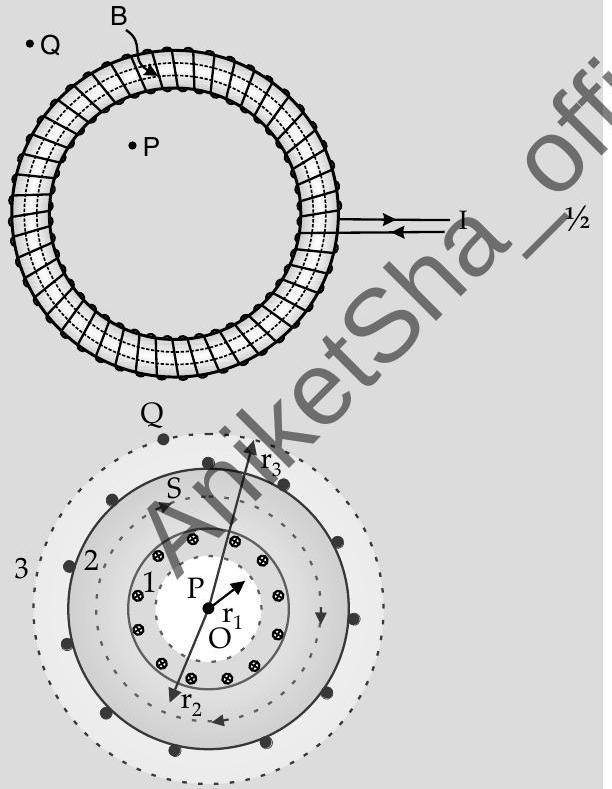Question: Q. 7. (i) How is a toroid different from a solenoid ?
(ii) Use Ampere’s circuital law to obtain the magnetic field inside a toroid.
(iii) Show that in an ideal toroid, the magnetic field (a) inside the toroid and (b) outside the toroid at any point in the open space is zero.
U] [O.D. Comptt. I, II, III 2014]
Show Answer
Solution:
Ans. (i) A toroid can be viewed as a solenoid which has been bent into a circular shape to close on itself. 1 (ii)

For the magnetic field at a point
(
(iii) For the loop 1, Ampere’s circuital law gives
Thus the magnetic field, in the open space inside the toroid is zero
Also at point
Hence,
[CBSE Marking Scheme 2014]
Answering Tips
- Practice the derivation of Ampere’s Circuital Law to obtain the magnetic field inside a toroid.






